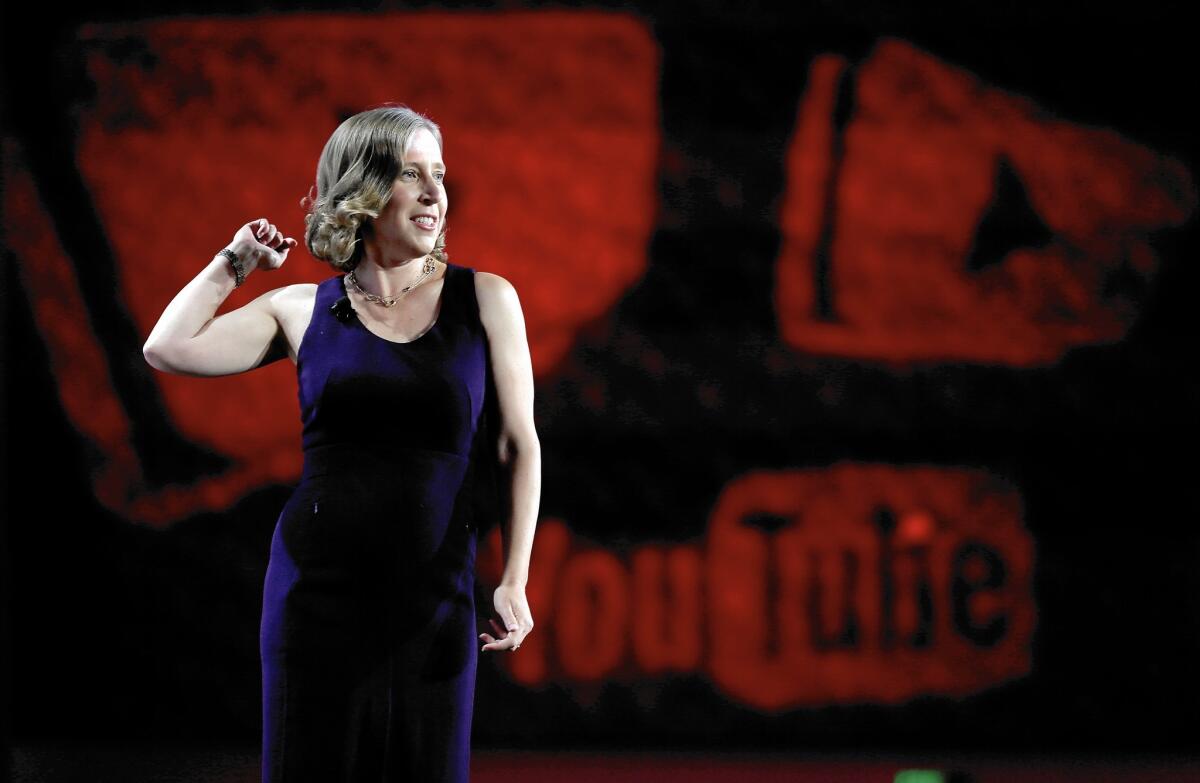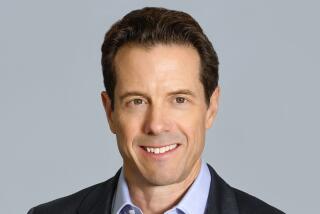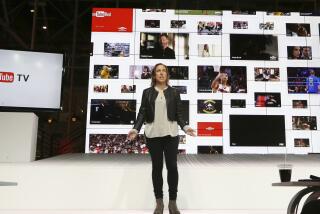What’s next for YouTube as Google reorganizes?

- Share via
Google stunned the tech world earlier this week when it announced the launch of Alphabet, a parent corporation designed to allow the continuation of what CEO Larry Page calls “smaller bets” for better innovation.
In the process, many speculative ventures were spun off into satellite companies, leaving a slimmer, more focused original Google.
One company that didn’t go with the Alphabet crowd: YouTube.
Stunning photos, celebrity homes: Get the free weekly Hot Property newsletter >>
With more than 1 billion users and a reported value of $70 billion, YouTube, which will remain part of Google, has evolved into a major asset for Sergey Brin and Page’s empire, a seemingly farfetched notion when the tech giant first acquired the once-small company in 2006.
But even as the video platform is at a point in its history where it can cement its dominance and become ever more lucrative, some are asking: Is YouTube too big to innovate?
The company faces a fierce race by competitors — Facebook, Vine, Vessel and others — to unseat it as the premiere platform in the marketplace.
“YouTube has plenty of room to grow but competition is its biggest challenge,” said Paul Verna, a senior analyst at research firm EMarketer. “Also, when you have [a company] that big ... growth is going to come in smaller increments. I think they are a very smart company that’s done a lot of things right. They are still well positioned to stay ahead.”
YouTube, which began operating under the motto “broadcast yourself,” came into prominence as a democratic space where anyone with a camera could post a video. Its amateur style and lack of curation was part of the appeal.
The video platform has since evolved into a hub of programming from all parts of the entertainment industry. But it is best known for its amateur video creators, many of whom have become professional digital stars more popular than traditional celebrities — at least in sought-after younger demographic groups.
Most YouTube creators, who regularly post content to their channels, generally stay on the platform to cultivate their fan base. Some, however, complain about the lack of revenue generated from their videos.
With any YouTube ad, the largest share of the money (55%) goes to the creator, according to an analyst familiar with YouTube’s business practices. Those who don’t think that’s enough sometimes branch out beyond YouTube to new platforms in order to make more money and expand their digital footprints.
“For many, their traditional home has always been YouTube — but now there are more alternatives in this world that has grown up so fast,” said Peter Csathy, chief executive of business advisory firm Manatt Digital Media. “YouTube is still a juggernaut. ... Other players just have different things to offer.”
For example, Vessel, which former Hulu CEO Jason Kilar launched in March, is a new online network that runs off a $2.99 monthly subscription model. It gives creators 70% of advertising revenue. It also shares 60% of its subscription revenue with creators. A growing list of popular online personalities, including GloZell Green and Shane Dawson, have signed up to give Vessel exclusive access to their newest videos before the content becomes available for free on YouTube.
Facebook, which some analysts consider YouTube’s biggest threat, is another competitor trying to attract creators. The social network reports that there are more than 4 billion video views on its social media platform every day. It also offers a more curated video experience for users.
On YouTube, the experience is perceived as less personal; most visitors discover new content by spotting it in the related right rail after they’ve actively sought out a video.
“Its democratic structure is a two-edge sword,” Jim Nail, principal analyst at Forrester Research, said about YouTube. “On one hand, being democratic means there’s a huge audience for creators. On the flip side of that, there’s a lot of clutter. You have to have someone that is going to help you navigate.”
In response, some creators have turned to multichannel networks, companies that formed specifically to help digital stars navigate the digital landscape.
“I was 12 when I joined YouTube in 2006,” Lucas Cruikshank, known for his YouTube personality Fred Figglehorn, said in an interview with The Times earlier this year. “There wasn’t anyone helping me when I first started — until [multichannel network] Collective Digital Studio came to me. They rescued me from a bunch of fake managers and told me they could help me expand my channel.”
It was a smart move. Cruikshank’s original “Fred” YouTube channel has now amassed more than 2.4 million subscribers. With help from CDS, he also went on to make a movie and TV show for Nickelodeon.
But for all of the multichannel networks and alternative video platforms that have arisen, it’s important to note that YouTube often benefits from the innovations sparked by the newer companies. And most of the creators that have gone to competing companies still use YouTube as a platform.
“When you look at the evolution of film and TV, the diversity of players and business models benefits everyone in the ecosystem,” Vessel’s Kilar said in an interview last month. “We don’t see ourselves as direct competition.... We see ourselves as helping creators to be more ambitious and create better content.”
In addition, YouTube has spent years making efforts to pull away from its more chaotic past by offering services to creators similar to that of smaller multichannel networks.
In 2009, the video platform launched YouTube Creator Academy, which offers more than 50 lessons and 12 courses online to users. The platform also has a wide variety of group courses available, some of which take place at the YouTube spaces in various cities across the globe.
In February 2014, Susan Wojcicki, who previously headed advertising and commerce at Google, was tapped to succeed Salar Kamangar as YouTube CEO, a move that marked a shift toward a new vision for the company and could help YouTube act like a smaller company as it continues to grow.
Google itself began in 1998 in Wojcicki’s garage in Palo Alto, which she rented to the search giant’s co-founders, Page and Brin. She was the company’s sixteenth hire, and became a driving force behind Google’s acquisition of YouTube for $1.65 billion.
In the last year, under Wojcicki, the company has embarked on a variety of new initiatives to boost revenue and improve the platform’s overall experience for fans, creators and multichannel networks.
Google even highlighted YouTube for its growth during its second-quarter earnings call in July, noting that the average YouTube viewing session on a mobile device is 40 minutes, a 60% year-to-year increase driving the fastest growth the company has seen in two years. The number of channels earning six figures is also up 50% year over year.
Fans of Wojcicki credit her for helping YouTube be at the forefront of innovation.
Shahrzad Rafati, CEO of BroadbandTV, a Vancouver, Canada-based tech and media company that represents YouTube talent, said Wojcicki reached out to her last year to learn more about the company’s vision and overall experience with YouTube.
“She really took the time to understand our needs and plans for the future,” Rafati said in an email interview. “She cared.”
At VidCon, an annual three-day conference for online video held in July at the Anaheim Convention Center, Wojcicki received several rounds of applause as she delivered the keynote address before a packed conference hall filled with creators and industry players.
Later that night, the longtime executive walked around the company’s party at the Anaheim Hilton like the biggest YouTube star in the room. Guests crowded around her, patting her on the back to say congratulations. Others gawked from afar, perhaps too intimidated to approach the party’s ultimate VIP.
“From a pure business perspective, you can’t deny YouTube has performed under Susan,” Csathy said. “But one of the challenges she faces is pushing back on all the industry forces who are against YouTube and its overall economics.”
The YouTube CEO is aware of the obstacles — and she’s thinking ahead.
Like others in the online video space, YouTube is expanding its original content. The company announced it is collaborating with the DreamWorks Animation-owned network AwesomenessTV to release several feature-length films over the next two years. More recently, the company named former MTV programming chief Susanne Daniels as vice president of YouTube Originals, where she will oversee development and production.
Wojcicki revealed at VidCon that the company will be redesigning its mobile app with new creation tools and features for users. YouTube will also launch support for 360-degree videos in 3-D, to enable immersive virtual reality experiences.
“Things are going in the right direction but there’s a lot more work for us to do,” Wojcicki told The Times after her keynote speech at VidCon. “We are cautiously excited, but I’m really focused on the future.”
MORE:
Comedy duo starring on YouTube segue to big screen with ‘Smosh: The Movie’
Three takeaways from YouTube CEO Susan Wojcicki’s keynote at VidCon
E!’s Grace Helbig experiment: Does YouTube stardom equal ratings?
More to Read
From the Oscars to the Emmys.
Get the Envelope newsletter for exclusive awards season coverage, behind-the-scenes stories from the Envelope podcast and columnist Glenn Whipp’s must-read analysis.
You may occasionally receive promotional content from the Los Angeles Times.










